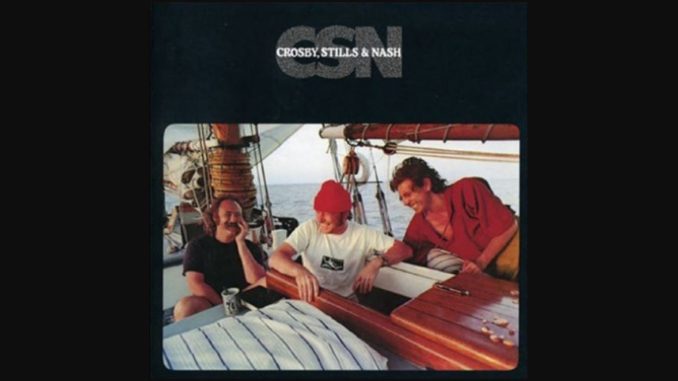
The constellation of musicians referred to as CSNY (Crosby, Stills, Nash & Young) has an intriguing and complicated history. CSN have mostly been active together without Young, only releasing three studio albums with him (plus compilations and live albums).
CSNY’s 1974 summer tour of baseball and football stadiums was one of the first arena tours. The Beatles came close with a series of stadium dates over two weeks in 1966, and bands like the Rolling Stones had done individual stadium dates as part of their tours, but CSNY’s scope (30 dates in 23 locations) and the resulting logistics challenges were unprecedented.
They got through it but it was tough going. Crosby dubbed it The Doom Tour in reference to both the difficulties in playing such large venues and the collateral excesses. The burn-out between band members was very real. It would be the final time all four of them worked together as CSNY until they recorded the American Dream album (1988).
Amazingly, Crosby and Nash were still good friends by the end, and as the rest of the CSNY partnership fragmented they signed a record deal as a duo. They had already released a good album in 1972, and followed with two solid albums in quick succession – the particularly good Wind On the Water in 1975 and Whistling Down the Wire in 1976. They also played several well-attended shows.
Late in 1976 Stills approached them at one of their concerts in Los Angeles, setting the stage for the return of the trio. They went on to record the album CSN – their second studio album as a trio. This is also officially the trio’s best selling record, even outselling their 1969 debut Crosby, Stills & Nash.
The album was recorded in Miami during the first half of 1977, eventually being released on 17 June that year. They took care to make the sessions pleasant, setting up shop at Criteria Studios as well as booking in with a company called Home At Last. This was a semi-palatial, multi-bedroom housing complex which allowed them an ideal mix of personal area and common space to stay together while they worked on the album. Every meal was home cooked by the staff who also kept things clean and tidy. It was an amazing environment, which brought them closer. They had a great time in Miami, enjoyed each other’s company, and the music was flowing, too.
Neil Young was not invited to the sessions. The guys had started this album as a trio, just like they started their first album in 1969. They were keen to go down that road again. They knew what Young could bring to the equation, but without him there, there was none of the tension and gamesmanship that could give the music an edge. Instead, they sought the collaborative and more relaxed feel of the first album. In many ways, this album is the sound of the three of them finding back to what they once had.
One evening, as they were in the studio working on the album’s opening track Shadow Captain, assistant engineer Steve Gursky suddenly froze. He had looked out the window and noticed a movement. In looking closer, he said “Hey! Someone’s lurking in the bushes!”
They all looked out to see what this was about, and saw what looked like a guy pissing in the bushes outside. The studio was on private grounds, and definitely not open to just anyone. They all wanted to see who it was, and stormed outside to take a look – and discovers that it’s fricking Neil Young!
Shocked silence. Neil breaks it with, “Umm, hello guys.”
“Umm, hi Neil.”
“I was just down here, man, recording in Fort Lauderdale. I thought I’d pop in.”
“Oh. Yeah. Cool.”
While there was no room for Neil Young on this album, once they got over the initial weirdness they did invite him in to show him what they’d done. By all accounts he was impressed with what he heard. Then he left, and there were no more visits on subsequent recording sessions.
Maybe Neil Young felt left out? Perhaps he was curious about what they were doing without him? He might have intended for the visit to be exactly the casual and straightforward drop-in that he made it out to be, but if so, why sneak around in the bushes outside? Even if you accept the best possible motives, this was very peculiar.
Graham Nash remembers this incident in his autobiography Wild Tales. “It was a long way to come just to check out our scene,” he says about Young’s appearance. “Even today, I can’t tell you what he had in mind. Neil Young is a weird cat […] and he’s never changed. That’s the beauty of it, I suppose.”

Facebook Comments